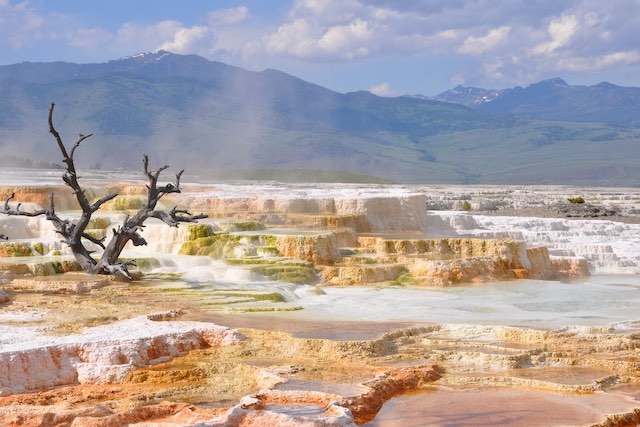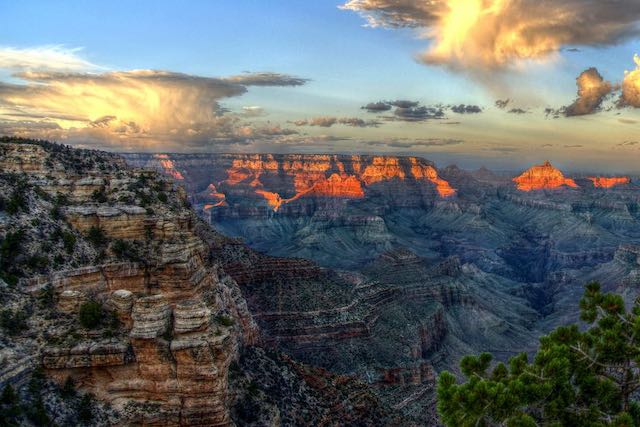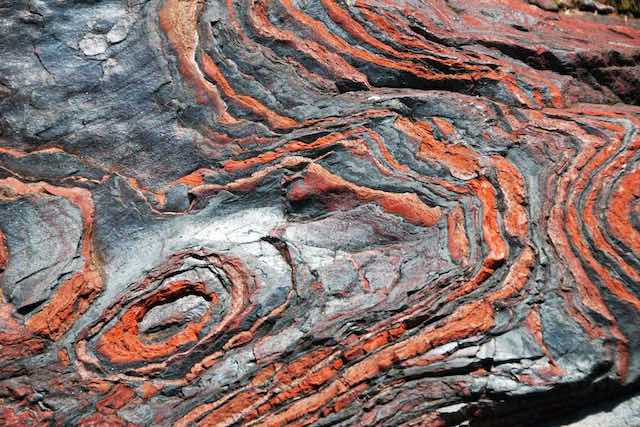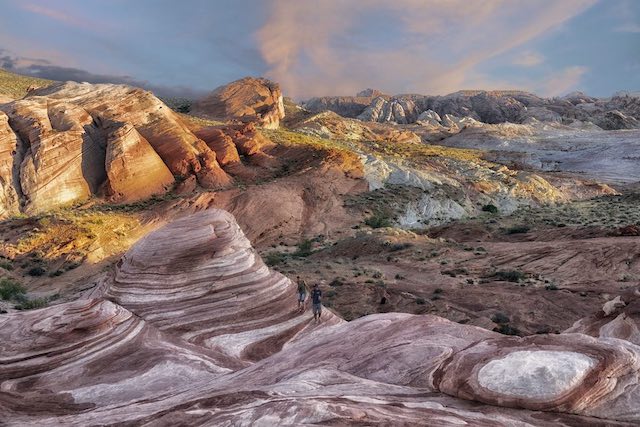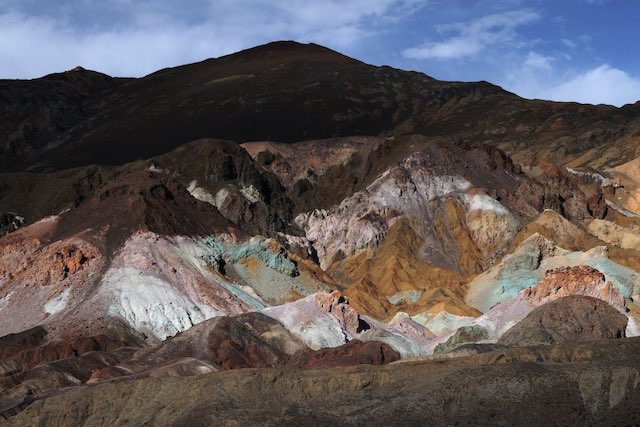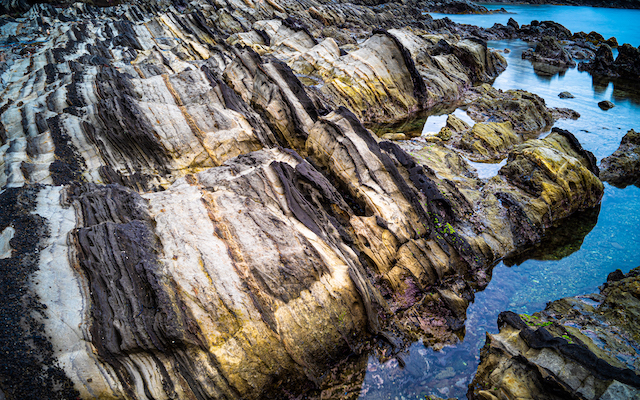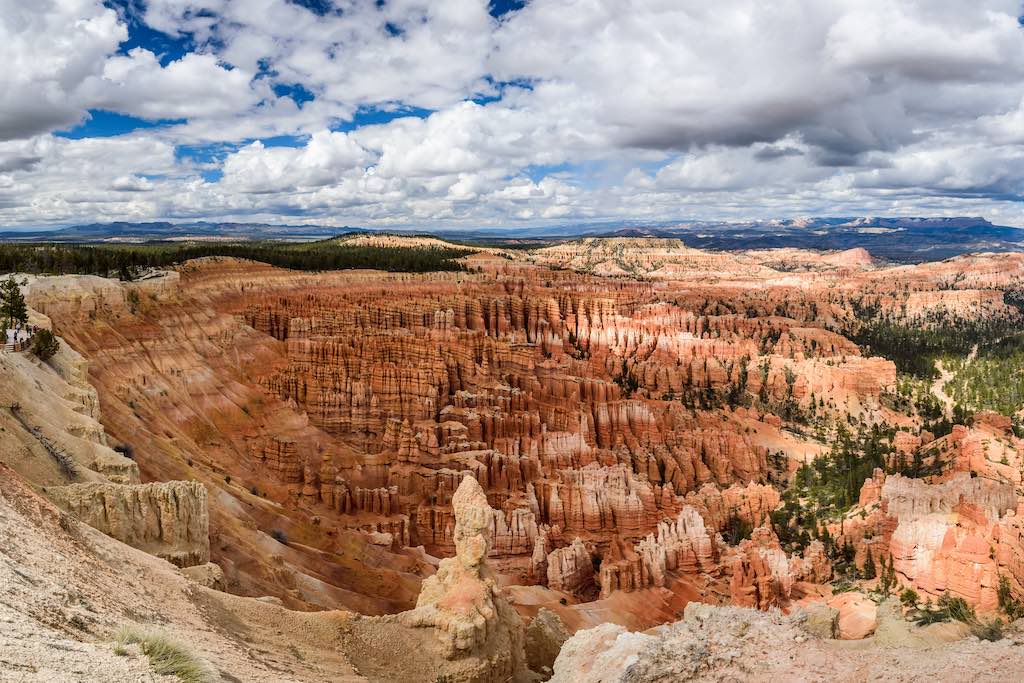
Numerous earthen pillars fill the bottom of the cliff
This is Bryce Canyon in southern Utah, United States, where countless earthen pillars stand at the bottom of a cliff. The brightly colored rocks, such as orange, pink, brown, and white, were gradually eroded by rainwater and crushed by freezing weather to form these pillars.
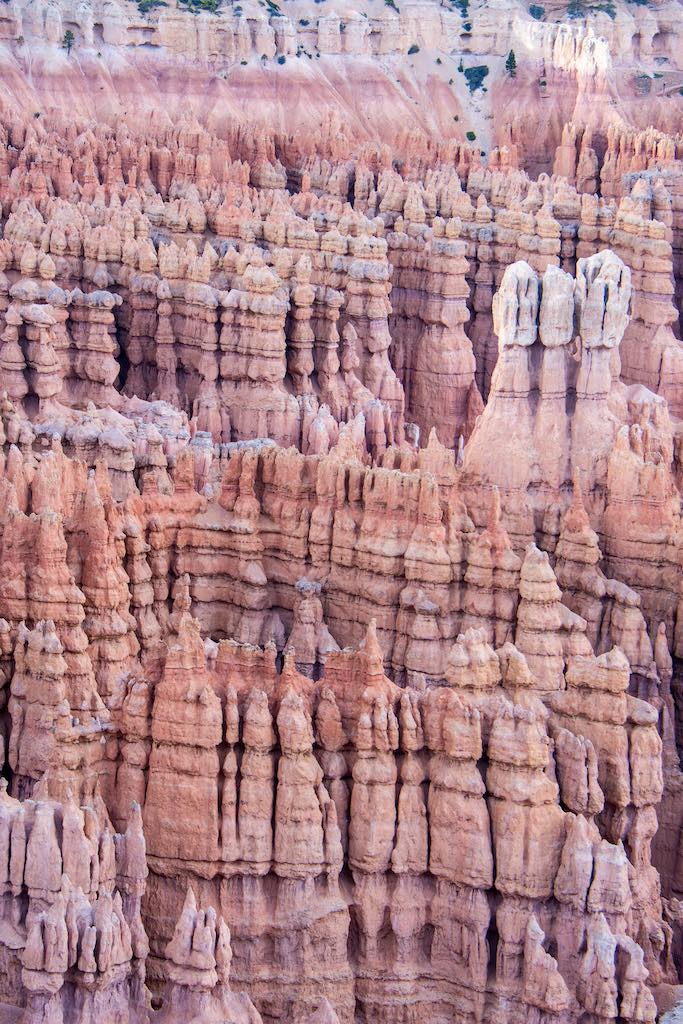
The geological formation of Bryce Canyon is approximately 63 to 40 million years old and consists mainly of mudstone, limestone and conglomerate (rocks consisting of coarse sand and pebbles).
Most of these rocks have a reddish color, such as orange, pink or brown, which is basically caused by the color of oxidized iron (iron rust color). For example, when iron rust color is added to white limestone, it turns pink, and when iron rust color is added to beige or gray mudstone, it turns orange or brown.
The strata in Bryce Canyon, such as mudstone, limestone, and conglomerate, are all formed in the sea, although they are of different rock types. In other words, this area was at the bottom of the sea more than 40 million years ago. And the difference in rock types indicates the difference in distance from the land.
What this means is that even if the same stratum has been deposited at the bottom of the ocean, if the ocean is close to land, relatively large amounts of rough sand and pebbles (large particles) will be deposited. On the other hand, if the sea level rises and the sea area becomes farther away from the land, the larger particles of sand and pebbles cannot be transported to the offshore area, and the finer particles of mud and clay will be deposited. If the area is further away from land, even mud and clay can no longer be transported, and in such pelagic environments, mainly limestone components will be deposited.
As the distance from the land has changed, the strata in Bryce Canyon have changed from mudstone to limestone to conglomerate. Of course, these are rough classifications, and intermediate rocks, such as “mudstone with limestone components”, are also found in Bryce Canyon.
Uplift of the Colorado Plateau and dissolution of limestone
The erosion around Bryce Canyon started about 15 million years ago, when the Colorado Plateau began to rise (uplift). This massive uplift divided the Colorado Plateau, including Bryce Canyon, into nine smaller plateaus of different elevations.
One of them is the Ponthogant Plateau, which constitutes the ground of the summit portion of Bryce Canyon. The elevation is about 2,400 to 2,700 meters, which is considerably higher than the summit portion of the Grand Canyon (about 2,100 meters above sea level), also located on the Colorado Plateau. Since the rate of land erosion tends to increase with elevation, the erosion of Bryce Canyon also started in earnest with the uplift of this period.
However, despite the name “Canyon”, Bryce Canyon is not a landform formed by the flow of a river. In other words, there is no river flowing between the earthen pillars.
The formation of Bryce Canyon is mainly due to erosion and dissolution by rainwater. During the uplift of the Colorado Plateau, several vertical fractures were formed in the strata, which gradually widened as rainwater seeped into the fractures. At the same time, dissolution progressed in the limestone areas.
Rainwater, which is slightly acidic due to the dissolution of carbon dioxide in the air, gradually dissolved the limestone, which is easily soluble in acidic water. Thus, the rainwater flowing through the cracks caused the erosion and dissolution of the Ponthogant Plateau, and the earth pillars were formed.
Freezing in winter also accelerates erosion
There is one more important phenomenon in the formation process of earth pillars. It is the crushing of rocks due to freezing in winter.
When it rains or snows in Bryce Canyon during the winter when the temperature drops, the water that seeps into the cracks during the day freezes during the night. As the volume of water expands when it freezes, the frozen water in the cracks tries to push the cracks apart, causing fine fractures. As a result, the fractured areas become brittle and more susceptible to erosion and dissolution.
In summary, vertical cracks caused by uplift, erosion by rainwater, dissolution of limestone by rainwater, and crushing by freezing in winter combined to create the Bryce Canyon earthen pillars.
The reason why there are so many folds in the earthen pillars is that each rock has a different susceptibility to erosion or dissolution. For example, limestone is preferentially thinned, but limestone with high magnesium content remains relatively thick because it is more resistant to dissolution. Mudstone, on the other hand, tends to remain thicker than limestone, but even within mudstone, there are differences in how easily it is eroded.
Because the strata are piled up horizontally in layers with different degrees of erosion and dissolution, the earthen pillars have a number of horizontal folds.
References
Katsuaki Watanabe (2020) Utsukushisugiru chigaku Jiten (Handbook of the Most Beautiful Geological Wonders), Tokyo: Shuwa System [published in Japanese].
National Park Service | Bryce Canyon National Park
Location
Translated with www.DeepL.com/Translator (free version)

